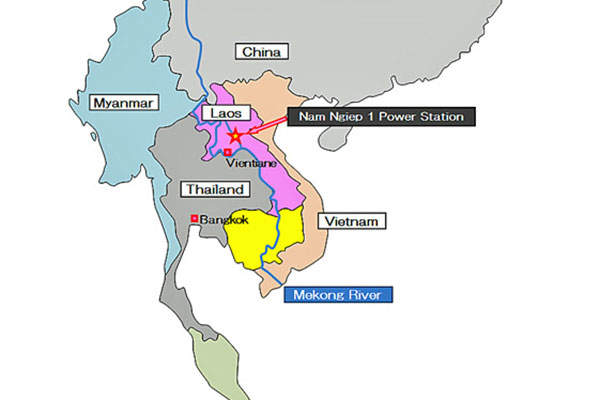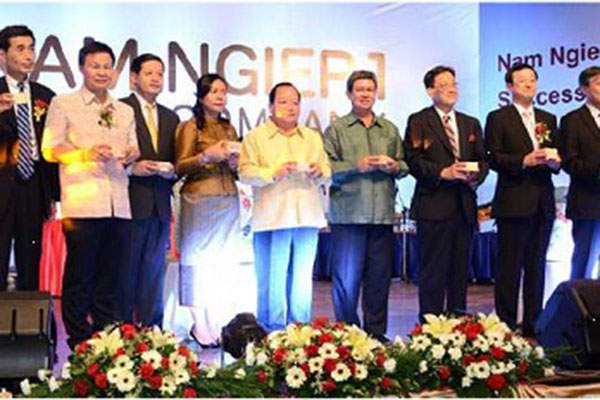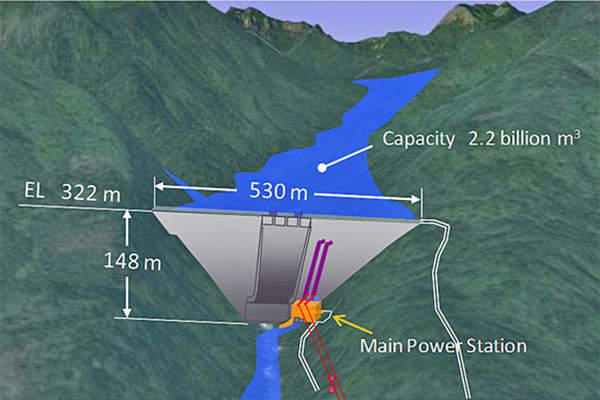The Nam Ngiep 1 project, a 290MW hydroelectric power plant being built on the Ngiep River in the Bolikhamxay and Xaysomboun provinces in Lao People’s Democratic Republic, is expected to strengthen the Thai-Laos power system.
The project includes the construction of the country’s highest concrete dam, a main reservoir with an effective storage capacity of 1.2 billion cubic metres of water, a re-regulation dam and reservoir, and two power plants.
Construction of the plant began in October 2014 and power generation is expected to begin in January 2019. The project is being developed on a build-operate-transfer basis.
Nam Ngiep 1 Power Company (NN1PC) will own and operate the project for 27 years under a concession agreement, following which the ownership will be transferred to the government. NN1PC is owned by Kansai Electric Power’s subsidiary KPIC Netherlands (45%), EGAT International (30%) and the Lao Holding State Enterprise (25%).
Nam Ngiep 1 hydropower plant make-up
The power generated by the Nam Ngiep 1 project will be partly fed to the Laotian national grid to meet domestic electricity needs. The remaining power will be sold to neighbouring countries to earn foreign exchange.
The project comprises two dams and two powerhouses, including a main powerhouse with a rated output of 272MW and re-regulation powerhouse of 18MW. The main dam will be a 148m-high roller-compacted concrete gravity dam with a crest length of 530m. The penstock tunnel of the main dam will have a length of 185m and diameter of 5.2m.
The main reservoir will have a catchment area of 3,700km² and surface area of 66.9km² at normal level. The main dam will include a ski-jump type spillway with four radial gates.
The main power station will feature two 136MW Francis turbine generators and is expected to generate 1,546GWh of electricity a year. The power generated from the main power station will be supplied to Thailand.
Water will be released from the main dam site to a regulating pond, where the second dam and power station will produce electricity for local use.
The re-regulating reservoir will have a catchment area of 3,725km² and effective storage capacity of 4.6 million cubic metres. The re-regulation powerhouse will consist of a bulb turbine generator unit producing 105GWh of energy a year.
Sale and transmission of power from Nam Ngiep 1 project
Power generated by the Nam Ngiep 1 hydroelectric power plant will be sold to the Electricity Generating Authority of Thailand (EGAT) and Electricité du Laos (EdL) under separate power purchase agreements for a period of 27 years.
Electricity from the main powerhouse will be transmitted to the Nabong substation through a 125km-long, 230kV transmission line.
Power generated by the re-regulation powerhouse will be transmitted to the Pakxan substation through a 45km-long, 115kV transmission line that will be constructed and operated by EDL.
Nam Ngiep 1 hydropower plant construction
Preparatory works for road, river diversion, temporary facilities and excavation for the dam foundation are scheduled for completion by 2015. Concrete placement of the main dam body is anticipated in 2016.
Financing of the Laotian hydropower plant
A debt package of $643m for the hydropower project is being provided by the Asian Development Bank (ADB), Bank of Tokyo-Mitsubishi UFJ, Mizuho Bank, Sumitomo Mitsui Banking Corporation, the Japan Bank for International Cooperation (JBIC) and other Thailand banks, including Bangkok Bank, Kasikornthai Bank, Siam Commercial Bank and Export-Import Bank of Thailand.
Contractors involved
IHI Infrastructure Systems, a Japanese company, was awarded the engineering, procurement and construction (EPC) contract for the project.
Hitachi Mitsubishi Hydro Corporation was engaged to conduct electromechanical works. Its contractual scope includes design, supply, installation and commissioning of the turbine units and supply of protection and control equipment, transformers, switchgear and other auxiliary systems under a turnkey package.
The civil engineering works contract for the power project was awarded to Obayashi Corporation.
Environmental Research Institute of Chulalongkorn University (ERIC) prepared the environmental impact assessment report for the project in March 2012, while ERM-Siam revised the report in January 2014.






